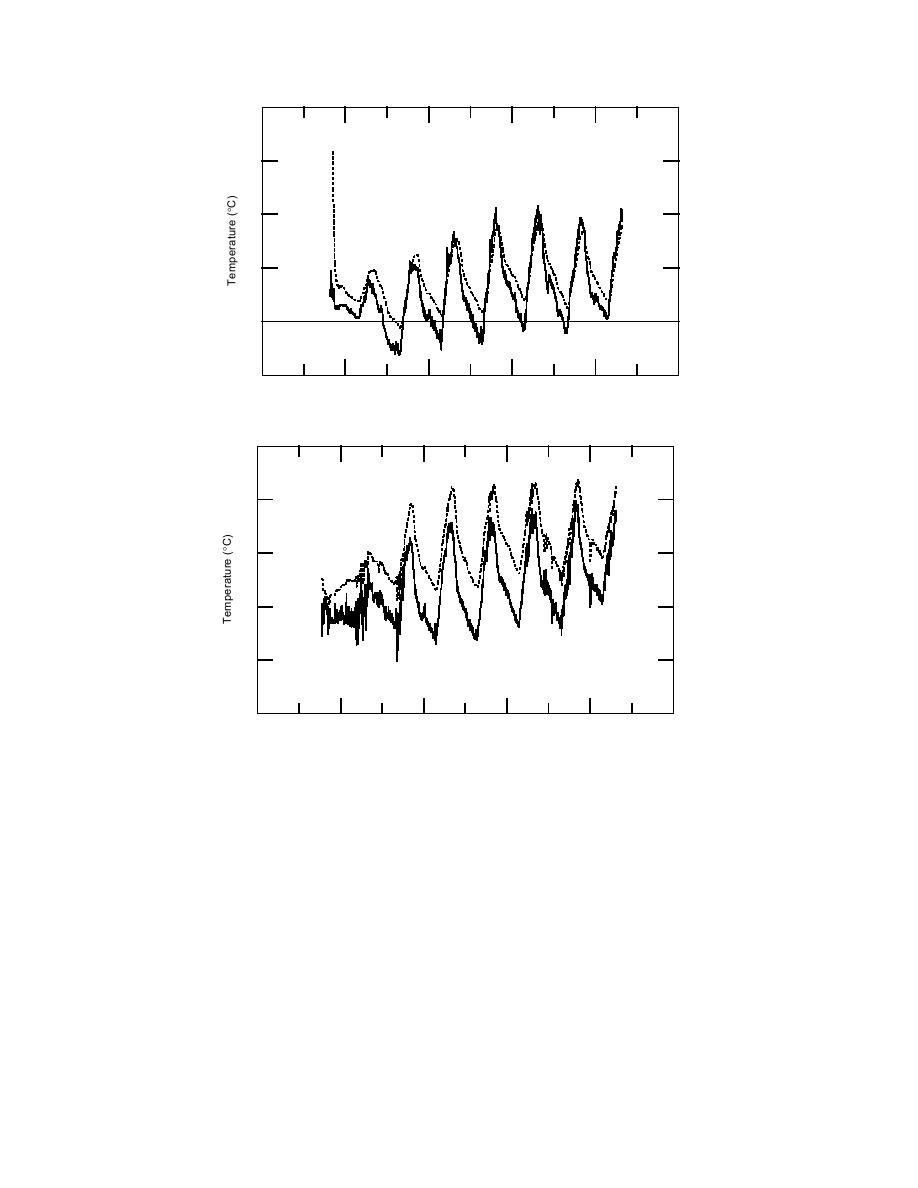
20
15
KC1
10
5
0
Air
5
20
22
24
26
28
30
March 1995
a. An unheated shelter.
25
Control
20
15
10
Air
5
0
20
22
24
26
28
30
March 1995
b. A heated shelter.
Figure 21. Thermal history of the masonry walls and surrounding air.
15.3C (60F), a maximum of 22C (71.6F) at 5:15
mortar joints. Figure 21 shows the 7-day tempera-
p.m. on the 27th, and a minimum of 10.1C (50F)
ture history of the cylinders and air in each side of
at 5:15 p.m. on the 21st.
the shelter. The initial mortar mixture tempera-
tures were approximately 17C (62F) for both
Mortar strength
conventional and antifreeze mortars. While typi-
Two sets of 50- 100-mm (2- 4-in.) cylindrical
cal protection methods for newly constructed
samples were cast from each type of mortar. The
concrete masonry may include overnight heated
samples made from the conventional mortar
enclosures, the heated wall section for this project
were stored in the warm side of the shelter, and
was protected for a full 7 days. The mortar on the
those from the antifreeze mortar were stored in
unheated side of the shelter had a 7-day average
temperature of 3.9C (39F), a maximum temper-
the cold side. The cylinders were allowed to cure
ature of 9.5C (49F) at 3:30 p.m. on the 26th, and
in their respective environments for 7 days. Then
a minimum of 0.6C (31F) at 7:30 a.m. on the
they were shipped to CRREL, stored at room tem-
perature, and tested at a maturity of 28 days. The
23rd. In contrast, the mortar on the heated side of
strength results are presented in Figure 22. The
the shelter had a 7-day average temperature of
25



 Previous Page
Previous Page
